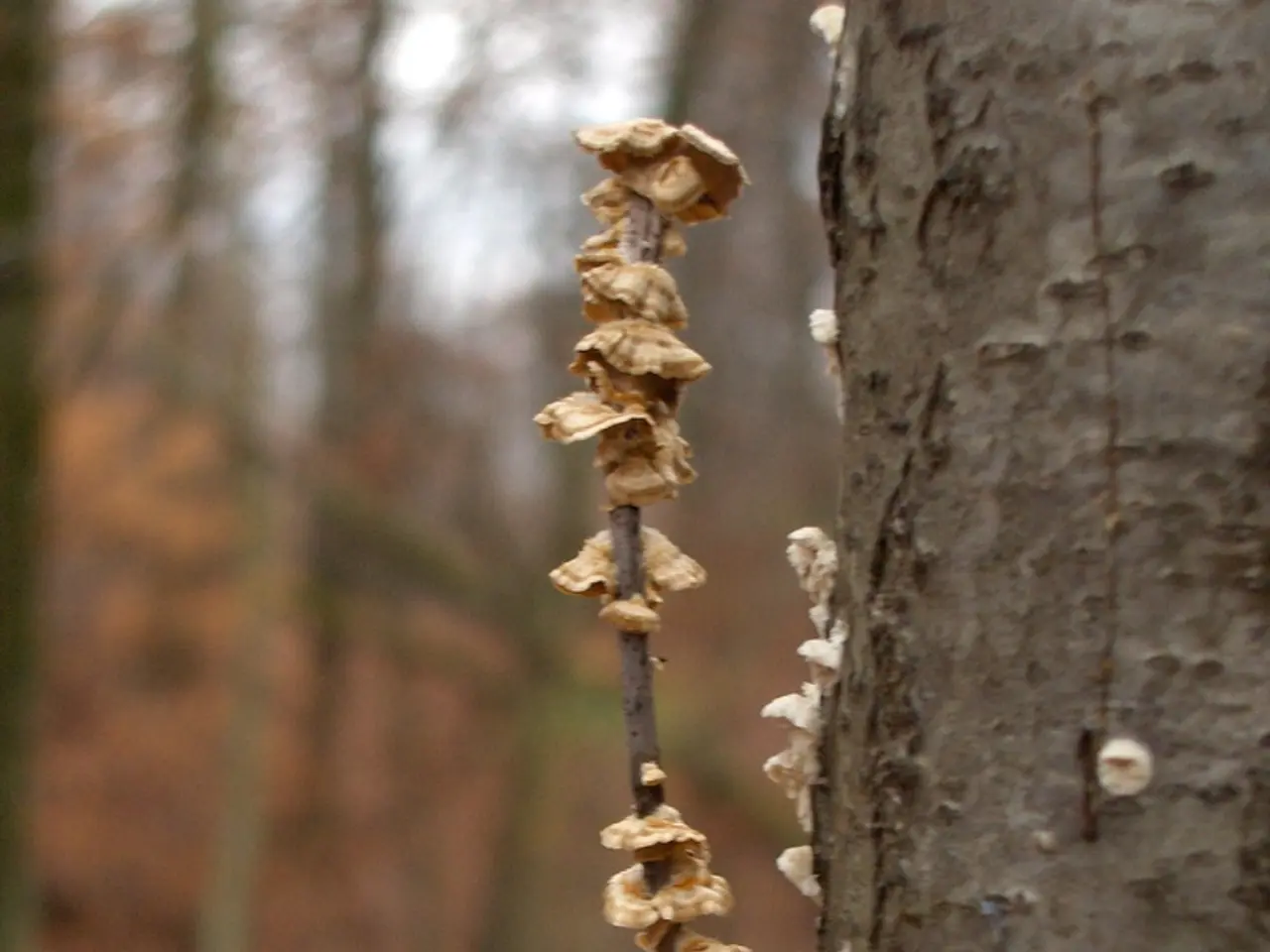Expanding Knowledge in Organic Fungal Cultivation: A Handbook for Nature Lovers
In the realm of sustainable agriculture, a groundbreaking approach is gaining traction: the Stametsian Model for a Synergistic Mycosphere. This ecological framework, named after renowned mycologist Paul Stamets, integrates mycology—the study and use of fungi—with permaculture principles to create a harmonious and sustainable relationship between fungi, plants, soil, and ecosystems.
The Core Concepts of the Stametsian Model
- Mycosphere as a Living Network: The mycosphere, the fungal community and its networks of mycelium in the soil and around plant roots, forms vast, interconnected systems underground that support nutrient exchange, water retention, and communication between plants.
- Fungi as Ecosystem Engineers: Fungi, especially mycorrhizal fungi and decomposers, are essential for breaking down organic matter, mobilizing nutrients, and improving soil structure. They extend the root systems of plants through mycelial networks, increasing nutrient and water absorption.
- Synergistic Interactions: The Stametsian Model emphasizes the synergy between fungi and plants—a mutually beneficial collaboration. Fungi receive carbohydrates from plants via photosynthesis; in return, fungi enhance plant health by improving access to nutrients and protecting roots from pathogens.
- Biodiversity and Resilience: Incorporating diverse fungal species supports resilient ecosystems. Healthy fungal communities help restore degraded soils, prevent erosion, and maintain balanced micro-environments.
Integration with Permaculture
Permaculture, an agricultural design philosophy focused on creating sustainable, self-maintaining ecosystems modeled on natural patterns, finds a perfect ally in the Stametsian Model.
- Design for Fungal-Plant Guilds: Permaculture designs often include guilds—groups of plants that support each other and the ecosystem. The model encourages introducing fungi into these guilds to form strong mycorrhizal networks, reinforcing plant health and productivity.
- Soil Regeneration: Rather than relying on synthetic fertilizers, the model uses fungi’s natural ability to decompose organic matter and recycle nutrients to regenerate soil fertility, a primary goal in permaculture.
- Water Efficiency: Mycelial networks improve soil water-holding capacity and reduce erosion, aligning with permaculture’s emphasis on water conservation and management.
- Pest and Disease Management: Healthy fungal communities can protect plants naturally, reducing the need for chemical pesticides—a principle consistent with permaculture ethics.
- Scaling Ecological Restoration: Stamets has also promoted the use of fungal inoculants and mushroom cultivation techniques to restore damaged ecosystems, which can be integrated into permaculture projects aiming for restorative agriculture.
Summary
The Stametsian Model for a Synergistic Mycosphere is a holistic approach combining fungi’s ecological functions with permaculture design to build sustainable, productive, and resilient agricultural systems. By fostering symbiotic fungal networks within diverse plant guilds, it enhances soil health, nutrient cycling, water retention, and overall ecosystem balance, reducing reliance on external inputs and supporting long-term ecological harmony in farming.
- The mycosphere, with its vast, interconnected fungal networks, contributes significantly to nutrient exchange and water retention in the soil, benefiting the health of plants and ecosystems.
- Fungi's role as ecosystem engineers is crucial, as they decompose organic matter, mobilize nutrients, and improve soil structure, enhancing its overall quality.
- The Stametsian Model emphasizes the relationship between fungi and plants, encouraging a mutually beneficial collaboration for improved plant health.
- The introduction of diverse fungal species contributes to resilient ecosystems, contributing to the restoration of degraded soils and the prevention of erosion.
- Integrating fungus into permaculture designs, such as plant guilds, strengthens mycorrhizal networks, promoting plant health and productivity.
- To regenerate soil fertility, the model relies on fungi's natural ability to decompose organic matter and recycle nutrients, following permaculture principles.
- Water conservation and management are facilitated through improved soil water-holding capacity and reduced erosion, due to mycelial networks in the Stametsian Model.
- The use of healthy fungal communities for natural pest and disease management reduces the need for chemical pesticides and aligns with the ethics of permaculture.
- Fungal inoculants and mushroom cultivation techniques, promoted by Stamets, can be integrated into permaculture projects to restore damaged ecosystems, contributing to restorative agriculture.
- This holistic approach, combining the ecological functions of fungi with permaculture design, builds sustainable, productive, and resilient agricultural systems that minimize reliance on external inputs.
- The integrated fungal networks within diverse plant guilds in the Stametsian Model improve soil health, nutrient cycling, water retention, and overall ecosystem balance.
- The study of fungi (mycology) and the use of fungi in health-and-wellness, fitness-and-exercise, and nutrition can also draw parallels with the Stametsian Model's emphasis on holistic connection between life forms.
- Learning about the Stametsian Model can encourage personal growth, as understanding its implications for environmental-science, cooking, lifestyle, food-and-drink, home-and-garden, data-and-cloud-computing, gardening, technology, healthy-cooking, education-and-self-development, career-development, and skills-training emphasizes the interconnection of elements in today's world.




